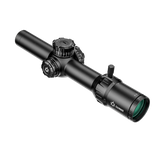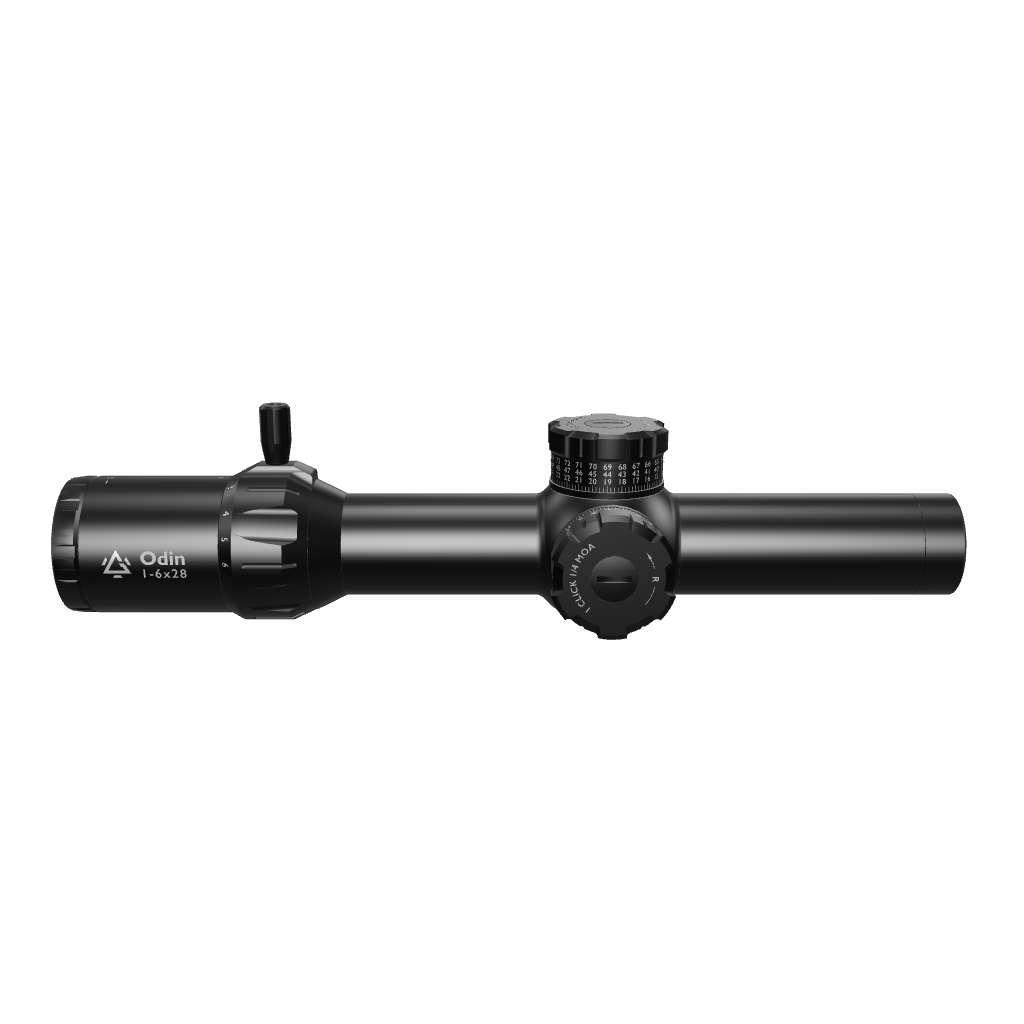Top 5 Maintenance Tips for Tactical Scopes
A tactical scope must perform flawlessly every time. Whether you are competing at the range or training for CQB (Close Quarters Battle), a foggy lens, loose turret, or misaligned reticle can turn an easy shot into a missed opportunity. In the world of tactical shooting, that can be costly.
Proper maintenance of your tactical scope will ensure that it stays crystal-clear, properly zeroed, and battle-ready. Here’s a complete, simple, and logical guide to maintaining your tactical scope — no steps skipped.
1. Clean Regularly and Effectively.
Experts recommend you clean a tactical rifle after every trip to the shooting range, or (more specifically) after every 200-300 rounds. For the cleaning to be effective, focus on the lenses, the rifle body, and the mounts.
The process of how to clean your scope can vary depending on the type of scope and the environment in which you shoot. For cleaning a tactical scope, follow these steps:
Cleaning the Lenses
To clean the lens of a tactical rifle, you need a lens brush (or an air blower), some lens cleaning solution, and a microfiber cloth. Follow these steps:
- Use the lens brush or air blower to remove dust and grit first (never wipe dry dirt — it can scratch).
- Apply lens cleaning solution to a microfiber cloth or a lens tissue — never spray directly onto the lens.
- Wipe in a gentle circular motion, from the center out.
Follow our guide on how to clean your rifle for more details and a clearer explanation of the process.
Cleaning the Body and Turrets
Even if your tactical rifle is made of solid and durable material like 7075 aluminum, a clean body is essential for long-term service. Clean turrets are also more tactile and more convenient for the precise adjustments needed in tactical shooting.
Follow these steps to clean the body and turrets of your tactical rifle
- Use a soft, dry cloth to wipe the housing (the body).
- For stubborn mud or grime, lightly dampen the cloth with water — avoid harsh chemicals.
- Pay special attention to the area around the elevation and windage turrets: debris buildup in these areas could cause tracking issues.
Cleaning the Mount and Rings
- Inspect the mounts, rings, and rail interfaces for grime, especially after muddy or dusty outings.
- Tighten any loose screws with the appropriate torque specs (use a torque wrench if possible — overtightening can damage your scope or mount).
2. Confirm Your Zero Every Time You Engage in Tactical Shooting
Tactical shooting is quick, energetic, and robust, which (to your rifle) means rough handling. Even with the best tactical scopes, a slight shift in POI (Point of Impact) can occur, even with rugged optics.
Most times, knowing how to zero your scope is not enough. Your rifle suffers when you slam into barriers, drop to prone positions, or make aggressive weapon transitions.
- After any hard use (CQB training, tactical competitions, hunting trips), confirm your zero.
- Bring a small zero-confirmation kit to the range: targets, tools for turret adjustment, and your ballistic data.
- Don’t assume your zero is intact just because the glass looks fine. Confirm the zero and ensure it is intact before putting it away.
3. Weatherproofing Maintenance is Key
Even scopes advertised as waterproof, fogproof, and shockproof still need care. If you are shooting in winter, there is even a greater need to take adequate precautions and protect your LPVO from the rain or snow.
- Check seals and O-rings: If your scope has exposed or removable parts, inspect the seals periodically. Aging rubber can crack, leading to moisture seepage.
- Drying after rain or immersion: Always dry your scope after exposure to rain, snow, or water crossings. Even if the interior stays dry, leaving water on the exterior can eventually corrode turrets or mounting screws.
- Temperature transitions: Going from a cold car to a warm room? Keep the scope in a sealed case during temperature changes to reduce fogging.
4. Store Your Tactical Scope Properly
Knowing where to store your rifle scope is crucial, especially when you are dealing with a tactical scope. Whether it’s mounted on your rifle or packed separately, your scope must be stored properly.
Storing a Tactical Scope in the Short-Term (Between Sessions)
- Use a padded case or rifle bag that protects both the optic and the weapon.
- Keep lens covers on whenever the rifle isn’t in active use.
- Store it in a low-humidity, temperature-stable environment. Humid basements and hot garages will age seals and coatings faster.
Storing a Tactical Scope in the Long-Term (After Use)
- If storing the optic off the rifle, keep it in a hard case with desiccant packs (silica gel) to prevent moisture buildup.
- Back off the turret adjustments slightly (not necessary for all scopes, but some shooters believe it relieves pressure on internal springs during long storage).
5. Tailor Your Scope Maintenance Routine
The approach and practices you employ to maintain your tactical scope must match the nature of the tactical exercise you are involved in. Different kinds of tactical shooting present different challenges when it comes to scope maintenance.
Maintaining a Tactical Scope for CQB (Close Quarters Battle) Scenarios:
- Prevent Frequent bump checks: In tight, fast-moving environments, scopes can take serious abuse. Inspect your mounting system weekly or after any hard training session.
- Focus on Anti Smudging: Lenses can get fogged or smudged during high-action drills — consider an anti-fog lens treatment if you’re doing heavy indoor CQB work.
Maintaining a Tactical Scope for Precision Tactical (Competition/Long-Range):
- Turret tracking verification: Before matches, run a quick box test (fire four shots, adjusting windage and elevation to form a box) to verify your turrets track accurately.
- Bubble levels and can't check: If you use a scope level, check it for tightness — precision relies heavily on rifle cant being consistent.
Maintaining a Tactical Scope for Duty Use / Field Deployments
- Wipe it down daily: Even if it looks clean, wipe it down after every patrol or training session.
- Thread locker: Use blue Loctite (non-permanent) on mounting screws if field reliability is critical and you won’t be needing regular scope swaps.
- Backup gear: Carry a mini lens pen and a microfiber in your loadout in case you need mid-mission cleaning.
Common Mistakes to Avoid when Maintaining a Tactical Scope
- Don’t use shirts, tissues, or paper towels to clean the lens. They’re too abrasive.
- Don’t overtighten turret caps — snug is enough.
- Don’t leave batteries installed (on illuminated reticle scopes) for long-term storage; remove them to avoid corrosion.
- Don’t spray cleaners directly onto the scope. Apply a cloth first.
- Don’t assume waterproof = invincible. Treat seals and coatings with care, even on “bombproof” optics.
Are Some Tactical Scopes Easier to Maintain?
It goes without saying that a good quality scope is less complicated to maintain. If your tactical scope has a good, solid aluminum body, multicoated lenses, and a high IP rating, your maintenance tasks would be greatly facilitated.
Here are some exquisite tactical scopes that will give you smooth and efficient operation, as well as quick and easy maintenance
Recommended LPVOS
Conclusion: Scope Maintenance Is Everything
If you treat your scope like a critical piece of kit, not an afterthought, it’ll return the favor with crystal-clear, pinpoint-accurate performance every time you step onto the range, into the shoot house, or out in the field.
You might also be interested in getting started in long-range shooting, and these tips on setting the right eye relief.







